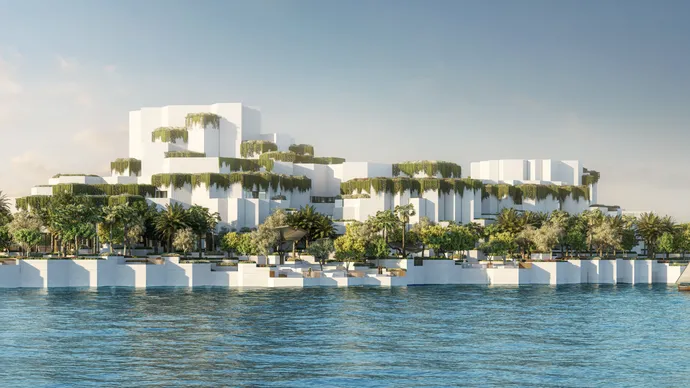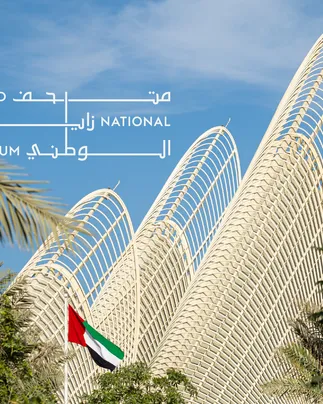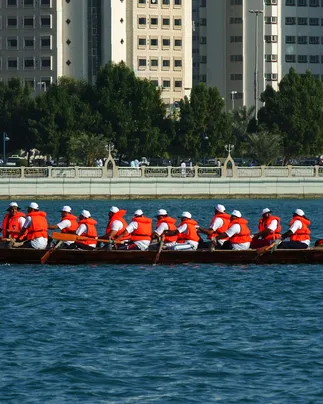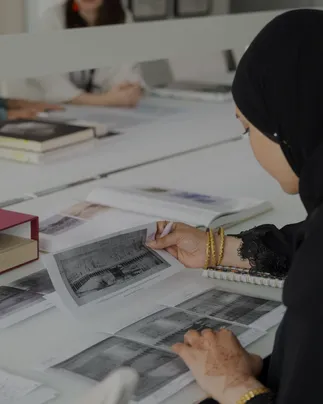The Natural History Museum Abu Dhabi will open to the public on 22 November 2025 in Saadiyat Cultural District, marking a significant cultural milestone for the emirate. As the largest museum of its kind in the region, it represents a new global destination for science, nature, and education, inviting visitors to explore the story of life on our planet and engage in conversations about its future.
The 35,000-square-metre museum is an exciting addition to the UAE’s evolving cultural landscape. It takes visitors on an immersive journey through 13.8 billion years of natural history – from the Big Bang and the formation of our solar system to the evolution of life, including the rise and fall of dinosaurs and the extraordinary biodiversity of our planet.
Among the highlights of the museum are three travellers from deep time. One is the famed specimen affectionately known as Stan, a nearly complete skeleton of a mighty Tyrannosaurus rex, an apex predator which ruled the Earth 67 million years ago. It is joined by the largest animal ever known, represented by a magnificent, 25-metre female blue whale specimen, offering extraordinary insight into evolution, marine biodiversity, and the planet’s ongoing story of life. Completing the trio is the Murchison Meteorite – an artefact that witnessed the formation of our planet and contains 7-billion-year-old grains formed even before our Solar System.
His Excellency Mohamed Khalifa Al Mubarak, Chairman of the Department of Culture and Tourism – Abu Dhabi, said: "The opening of the Natural History Museum Abu Dhabi marks a major milestone in our journey to shape the emirate’s cultural landscape. The museum offers an immersive look at the story of life on Earth, framed for the first time through an Arabian lens, with the fauna, flora, and geological history of the region forming a prominent part of the visitor journey. The museum’s research and educational institution supports scientific knowledge and undertakes innovative scientific studies in zoology, palaeontology, marine biology, molecular research and earth sciences. By fostering engagement with the natural sciences, the Natural History Museum Abu Dhabi inspires future generations and contributes to a more sustainable future."
Across the galleries, the natural history of the Arabian Peninsula forms a central part of the museum’s narrative, highlighting the region’s unique contribution to Earth’s story. Among the most remarkable discoveries found in Abu Dhabi is an extinct species of elephant known as Stegotetrabelodon emiratus. This ancient member of the Elephantidae family was distinguished by tusks in both its upper and lower jaws — a rare trait unseen in modern elephants — offering visitors a glimpse into the evolutionary journey of these creatures and reflecting the region’s rich natural heritage.
Designed by renowned architects Mecanoo, the museum’s building rises from the Saadiyat Island landscape like a natural formation. Its silhouette echoes natural rock formations, reflecting the museum’s mission to connect people with the natural world and inspire the next generation to question, discover, and take part in shaping a more sustainable future.
Inside, the museum features a series of permanent galleries and exhibitions that take visitors on a journey through time. The main galleries include: The Story of Earth, The Evolving World, Our World, Resilient Planet, and Earth’s Future, alongside side galleries such as The PalaeoLab, The Life Sciences Lab, Arabia’s Climate, Beyond the Horizon, and The Human Story. Visitors can also explore the Interactive Theatre, which offers immersive visual experiences that transport them through time.
To mark its opening, the museum will present two temporary international exhibitions: The March of the Triceratops, showcasing the world’s only touring Triceratops herd, and the 61st Wildlife Photographer of the Year, one of the most prestigious global showcases of nature photography. Together, these exhibitions will launch the museum’s international programme and pave the way for a new era of scientific and cultural collaboration at both local and global levels.
The museum joins a community of institutions including Louvre Abu Dhabi, teamLab Phenomena Abu Dhabi, and the upcoming Zayed National Museum and Guggenheim Abu Dhabi, reinforcing Saadiyat Cultural District as a global centre for knowledge, creativity, and cultural exchange – a place where the past, present and future of humanity come together in one living story.







